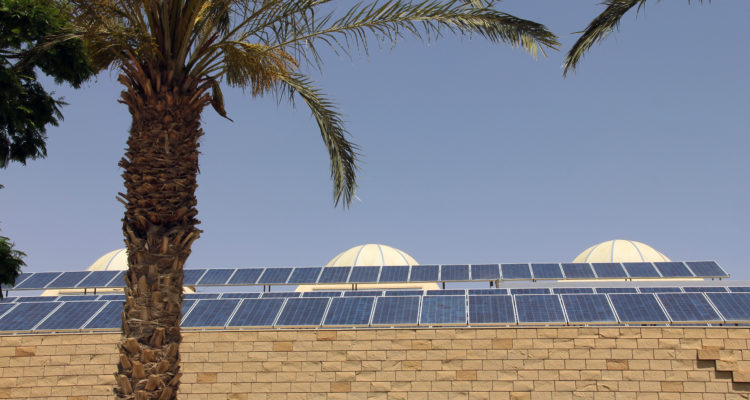With privatized solar power sources preparing to add 1,600 megawatts to Israel’s electricity supply in the next three years, the Jewish state is approaching its targets for renewable energy sources.
By: Batya Jerenberg, World Israel News
Israel’s Minister of National Infrastructure, Energy, and Water Resources, Yuval Steinitz, just published a new policy that will allow for 1,600 additional watts of electricity to be added to Israel’s electric grid exclusively through the use of solar energy over the next three years. This addition will permit Israel to reach 44% of the target it set in 2009 to have one-tenth of all electricity in the country produced from clean energy sources by the year 2020, reported Globes on Sunday.
Considering how sunny it is in Israel most of the year, it is not surprising that the vast majority of Israel’s renewable energy is solar – and yet, to date, only three percent of Israel’s electricity is produced from such renewable sources. The project now being pushed by the ministry is meant to change this percentage drastically in just a few years’ time.
The innovative part of this plan is to have most of the electricity generated from rooftop panels installed on private homes and businesses, instead of large solar energy facilities on the ground, which has been the case until now. This means that the government will push privatized production of electricity in the renewable realm in a manner that incorporates ordinary citizens.
Rooftop solar facilities would seem to be a perfect solution for a small country like Israel, yet they have been installed on only 6,000 of Israel’s two million rooftops. The reasons for this include their high price, bureaucratic red tape regarding installation, taxation, financing problems with banks, and lack of awareness among the public.
Now the Public Utilities Authority (PUA) is promising to streamline the process of building and connecting such facilities. Equally if not more important, however, are the two kinds of incentives in the plan for private people and businesses. The latter (such as factories), which have large rooftops, will get paid for the extra electricity their facilities produce beyond what they consume themselves, according to a predetermined rate.
All the electricity produced on residential rooftops, on the other hand, will be streamed straight to the electricity grid. The homeowners will receive a “feeder” rate to be set by the PUA that will be higher than those set for large roofs and land stations, and will be paid throughout the 20-25-year lifespan of the facility. This will make it easier to obtain bank financing for building.





